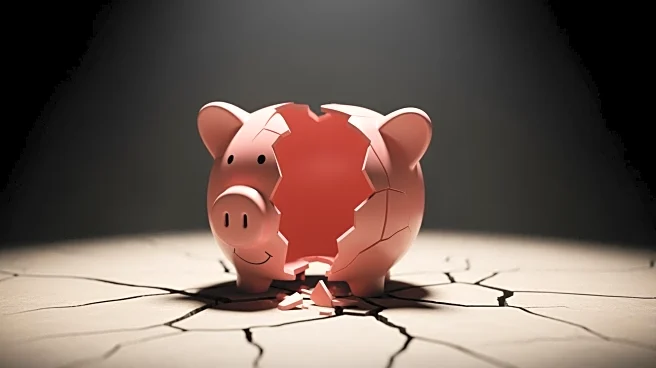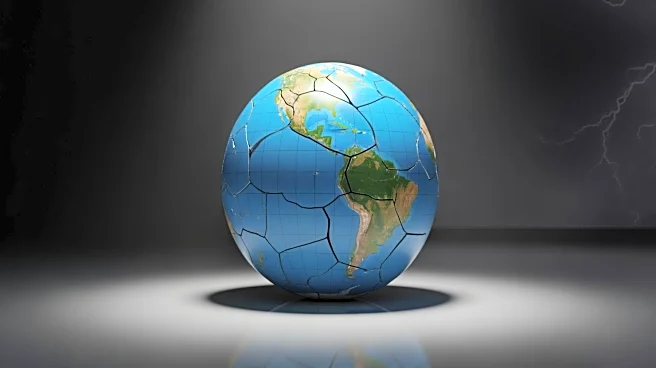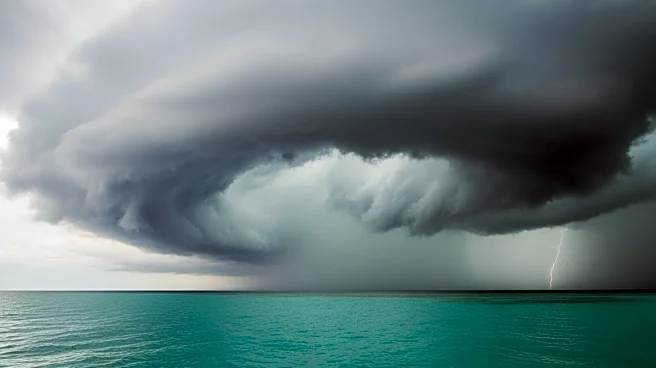What's Happening?
Aon's Global Catastrophe Recap for the third quarter of 2025 reveals that global insured losses from natural disasters have reached at least $114 billion in the first nine months of the year. The report
indicates that total economic losses amounted to a minimum of $203 billion during this period. Despite fewer major disasters in the third quarter, approximately 18,000 fatalities occurred due to events such as earthquakes and heatwaves, which is 66% below the 21st-century average. The deadliest event was the August 31 earthquake in Afghanistan. Aon identified 36 events that each caused over $1 billion in economic losses, with 22 of these exceeding $1 billion in insured losses. The protection gap globally narrowed to a record-low 44%, largely due to high insurance coverage in the United States, where insured losses accounted for 88% of total losses. Severe convective storms were the most costly peril, resulting in $57 billion in insured losses, marking the third-highest on record. The Palisades Fire alone caused $23 billion in insured losses, contributing to total wildfire insured losses of more than $40 billion.
Why It's Important?
The significant insured losses reported by Aon underscore the growing economic impact of natural disasters globally. The narrowing protection gap, particularly in the United States, highlights the importance of insurance coverage in mitigating financial losses from such events. The high insurance coverage in the U.S. suggests a robust insurance market that can absorb substantial losses, potentially reducing the economic burden on affected communities and industries. The record-high global reinsurance capital of $735 billion and the increase in catastrophe bond volumes by nearly 20% year-on-year to $54 billion indicate a strong financial backing for disaster recovery efforts. These developments are crucial for maintaining economic stability and resilience in the face of increasing natural disasters, which can have profound effects on industries, public policy, and societal well-being.
What's Next?
As the frequency and severity of natural disasters continue to rise, stakeholders including governments, insurance companies, and businesses may need to reassess their strategies for disaster preparedness and response. The increase in reinsurance capital and catastrophe bonds suggests a growing market for financial instruments designed to manage disaster risk. This trend may lead to further innovations in insurance products and risk management strategies. Additionally, policymakers might focus on enhancing infrastructure resilience and implementing more stringent building codes to mitigate the impact of future disasters. The insurance industry may also explore expanding coverage options and improving accessibility to ensure broader protection against economic losses.
Beyond the Headlines
The report's findings highlight the ethical and cultural dimensions of disaster response, particularly in regions with less insurance coverage. The disparity in protection levels between different countries raises questions about global equity in disaster recovery efforts. As insurance coverage becomes more critical in managing economic losses, there may be increased pressure on international bodies to support vulnerable regions in developing robust insurance frameworks. Furthermore, the cultural impact of frequent natural disasters could lead to shifts in societal attitudes towards climate change and environmental sustainability, potentially influencing long-term policy decisions.












